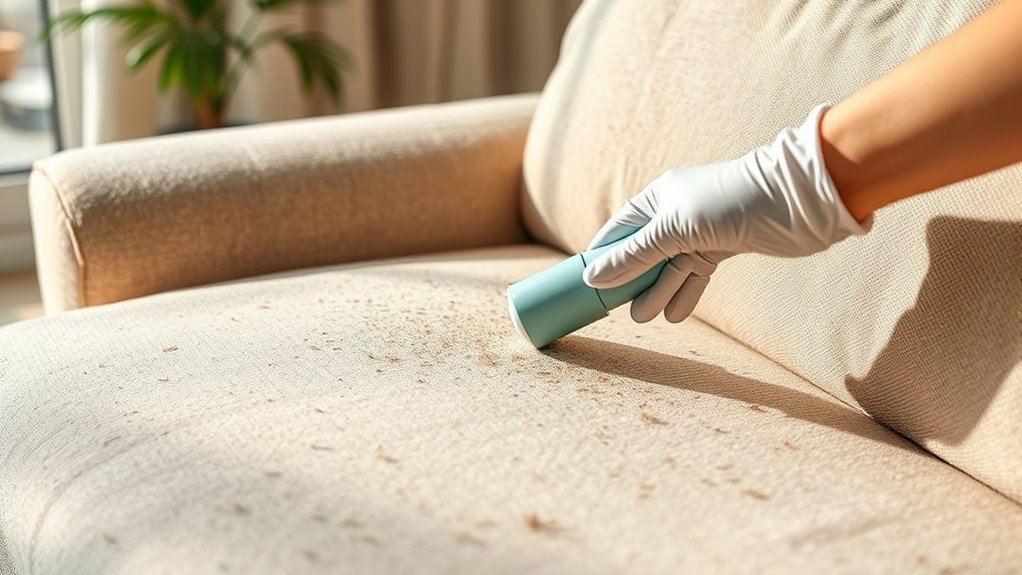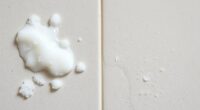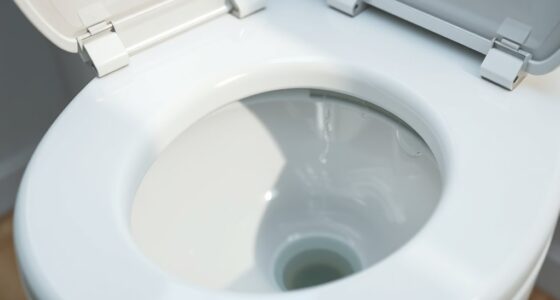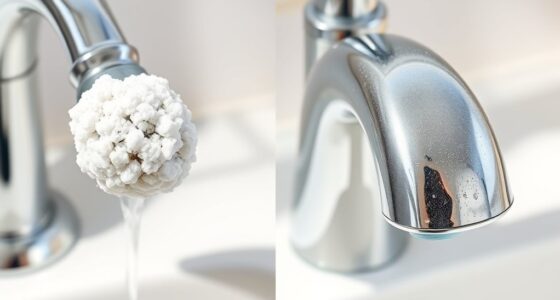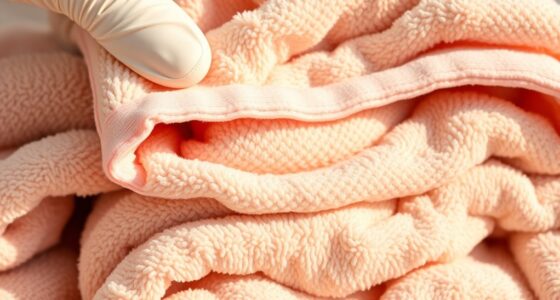To effectively remove pet hair from fabrics without damage, use sticky tape or lint rollers, pressing firmly and lifting gently. Dampen a sponge or wear rubber gloves to loosen hair, then run your hand or tool over the fabric. Choose soft-bristled brushes or microfiber cloths for delicate surfaces, and wash garments inside out with gentle detergents, air drying afterward. Regular grooming and proactive cleaning help prevent buildup—continue exploring for more foolproof tips.
Key Takeaways
- Use lint rollers or sticky tape with firm pressure to lift pet hair from fabrics quickly and safely.
- Wear damp rubber gloves to run over textiles, dislodging hair through gentle friction.
- Choose soft-bristled brushes or microfiber cloths designed for delicate fabrics to trap pet hair effectively.
- Wash fabrics in cold or lukewarm water with mild detergents, and dry on low heat to prevent hair setting.
- Regular grooming and proactive cleaning reduce loose hair and minimize pet hair buildup on fabrics.
Using Sticky Tape and Lint Rollers Effectively
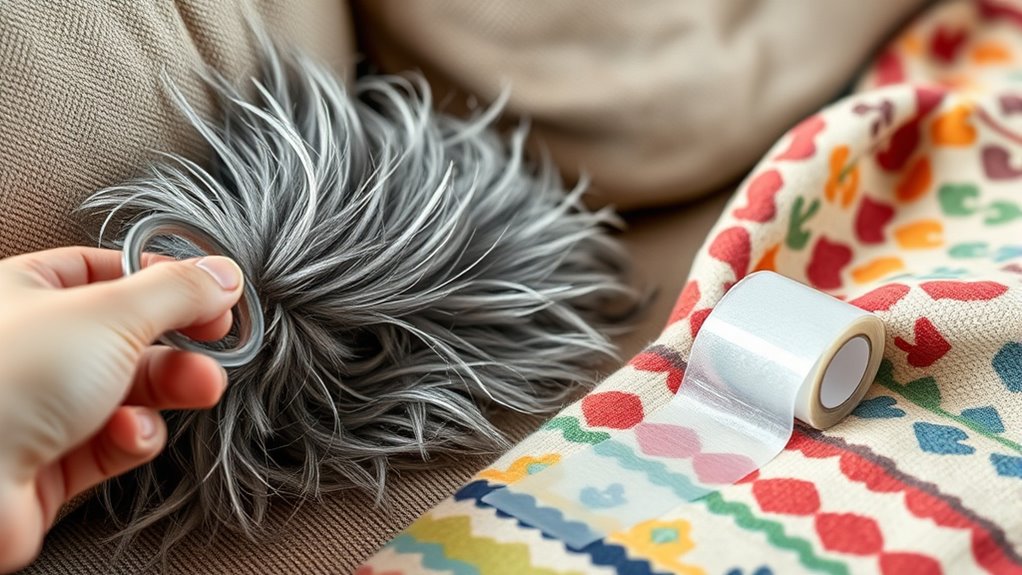
To effectively remove pet hair from fabrics, sticky tape and lint rollers can be your best tools. They’re simple, quick solutions that prioritize fabric safety while tackling pet hair removal. When using sticky tape, press it firmly onto the fabric surface, then lift away to trap hair. Change the tape frequently to maximize effectiveness. Lint rollers work similarly; simply roll over the fabric in smooth, even strokes to pick up pet hair without damaging delicate fibers. For best results, use gentle pressure to avoid stretching or tearing the fabric. These tools are ideal for quick clean-ups on clothing, upholstery, and bedding. Regular use helps maintain a tidy, pet hair-free home while ensuring your fabrics stay in good condition.
Employing Damp Sponges and Rubber Gloves
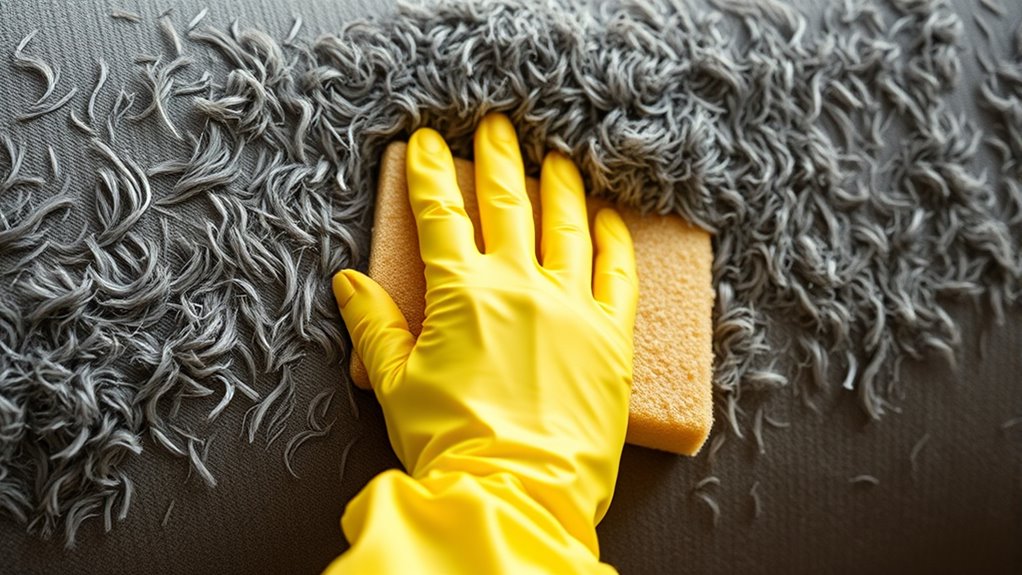
When traditional tools fall short, damp sponges and rubber gloves offer an effective alternative for pet hair removal. Dampen a sponge slightly and run it over fabrics; the moisture helps loosen hair without damaging delicate fibers. For stubborn hair, consider applying a small amount of fabric softeners or hair detanglers to the sponge first, which can make hair easier to lift. Rubber gloves work similarly; put them on and run your fingers over the fabric, causing the hair to cling to the rubber surface. The friction helps dislodge pet hair safely and efficiently. This method is gentle, fabric-safe, and inexpensive. Plus, it’s easy to control, especially on textured or uneven surfaces, making it a versatile solution for pet hair cleanup. Understanding passive voice detection can help improve the clarity and impact of your writing.
Choosing the Right Fabric-Friendly Cleaning Tools
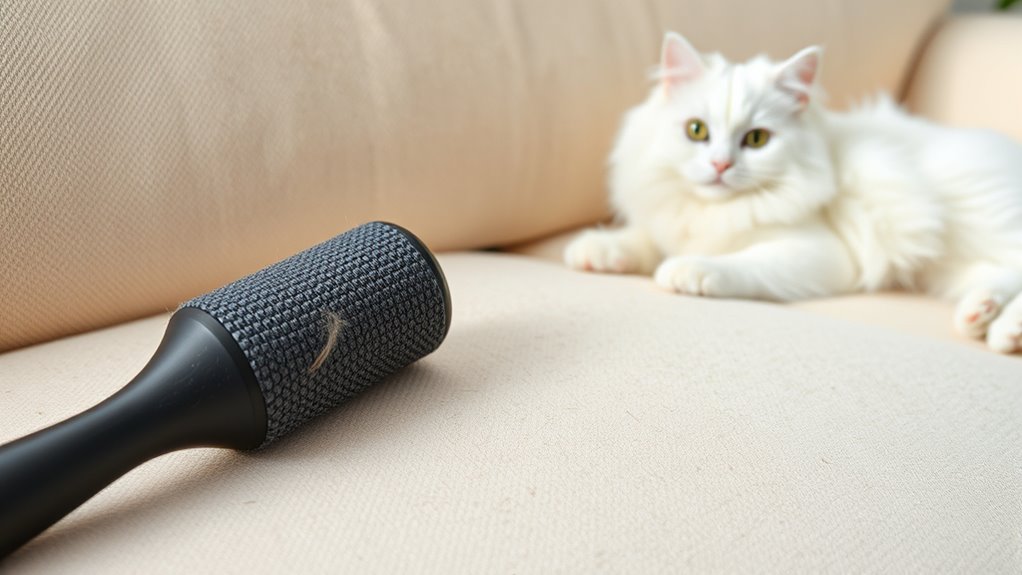
After trying damp sponges and rubber gloves, selecting the right tools can make pet hair removal even more effective and gentle on fabrics. For furniture fabric and delicate textiles, choose tools designed to lift hair without damaging fibers. Soft-bristled brushes, microfiber cloths, and pet hair removers with rubber rollers are ideal options. These tools trap hair while being gentle enough for fragile surfaces. Additionally, using Kia Tuning techniques can enhance the overall maintenance and care of your vehicle’s interior, ensuring it stays in top condition.
Applying Gentle Washing and Drying Techniques
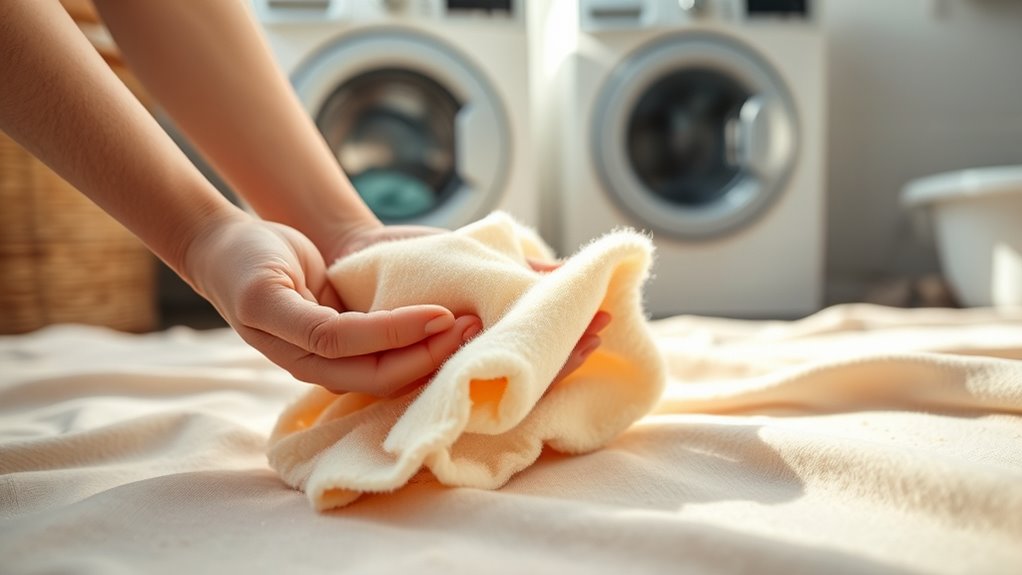
Applying gentle washing and drying techniques can substantially reduce pet hair transfer and prevent fabric damage. When performing pet hair removal, opt for cold or lukewarm water to avoid weakening fibers. Use mild detergents designed for delicate fabrics, which help maintain the integrity of your clothing. Turn garments inside out before washing to loosen embedded pet hair and prevent it from spreading. During drying, avoid high heat, as it can set pet hair into fabrics and cause damage. Instead, choose air drying or a low-heat setting, which helps release hair naturally. Regularly cleaning your washing machine’s lint filter also aids in fabric care techniques, preventing pet hair buildup and ensuring your clothes stay pet-hair free after each wash. Incorporating a dedicated lint removal tool can further enhance pet hair removal efficiency from fabrics.
Preventative Measures to Minimize Pet Hair Accumulation
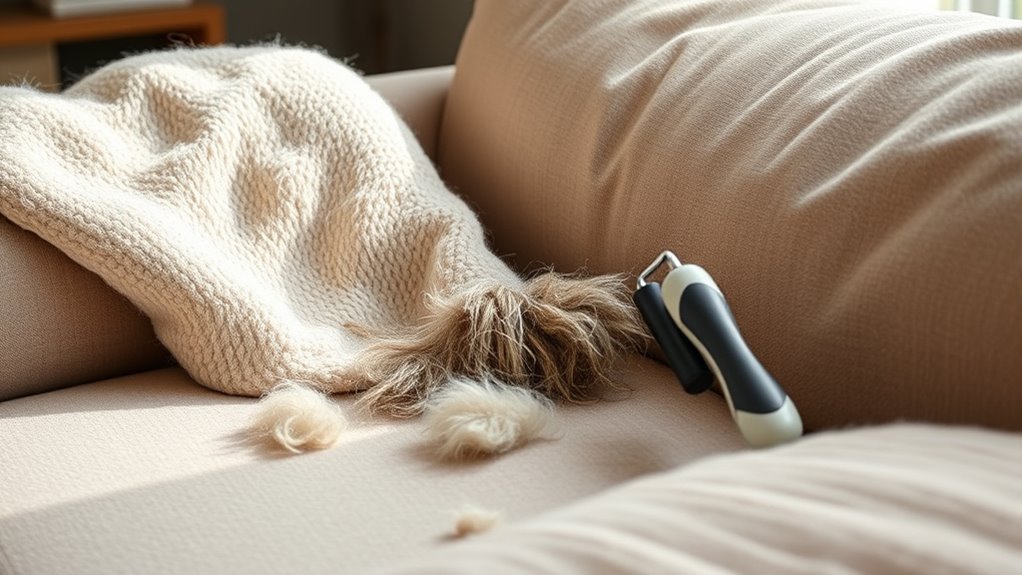
Implementing proactive grooming routines is one of the most effective ways to minimize pet hair buildup on your fabrics. Regular brushing reduces loose hair and keeps it from shedding onto furniture. You should also consider furniture placement, positioning pet beds and toys away from main fabric areas to limit hair transfer. To further prevent accumulation, establish consistent grooming schedules tailored to your pet’s coat type. Additionally, choosing the right vacuum cleaner attachments, such as upholstery brushes and crevice tools, can significantly enhance your ability to remove pet hair from various fabric surfaces.
Frequently Asked Questions
Can I Use These Techniques on Delicate or Vintage Fabrics?
Yes, you can use these fabric-safe techniques on delicate fabrics and vintage textiles, but with caution. Always test a small, hidden area first to verify there’s no damage or discoloration. Use gentle tools like a soft brush or lint roller, and avoid harsh chemicals. For valuable or fragile items, consider consulting a professional cleaner or textile conservator to safeguard your delicate fabrics and vintage textiles from harm.
Are There Any Fabrics That Should Not Be Cleaned With These Methods?
Like stepping into a time machine, some fabrics simply shouldn’t be cleaned with these methods. You should avoid delicate or vintage fabrics, as they’re more prone to damage from cleaning risks. Fabrics like silk, velvet, or antique textiles require special care and professional cleaning. Using the wrong technique can cause stains, tears, or discoloration. Always check fabric labels and test on a hidden area before attempting any pet hair removal method.
How Often Should I Repeat the Removal Process for Best Results?
You should repeat the pet hair removal process every one to two weeks for best results, following general frequency guidelines. Regular maintenance helps keep your fabrics free of pet hair and prevents buildup. Pay attention to high-traffic areas and pet resting spots, and increase the frequency if you notice hair accumulating quickly. Consistent cleaning not only maintains a tidy space but also prolongs the effectiveness of your fabric-safe removal techniques.
Do These Methods Work on Pet Hair Embedded Deep in Upholstery?
Yes, these methods can work on pet hair embedded deep in upholstery fibers. To effectively remove embedded pet hair, use a rubber glove or a sticky lint roller to loosen and lift the hair from deep fibers. You might need to repeat the process multiple times, especially for stubborn hair. For best results, combine these techniques with a vacuum cleaner equipped with a brush attachment to guarantee thorough embedded removal.
Can I Combine Multiple Techniques for More Effective Pet Hair Removal?
Yes, you can combine multiple techniques for more effective pet hair removal. Using technique combinations like vacuuming first, then applying a lint roller or damp cloth, enhances your cleaning regimen. This multi-step approach targets hair embedded deep in fabrics and surface hair, ensuring a thorough clean. Mixing methods makes your efforts more efficient, especially on stubborn pet hair, leaving your furniture and clothing looking fresh and hair-free.
Conclusion
Say goodbye to pet hair chaos and reclaim your space like a calm, clear lake. With these fabric-safe techniques, you’ll smoothly sweep away stubborn fur, turning your home into a pristine sanctuary. Think of your efforts as gentle waves washing over every fiber, leaving your fabrics fresh and hair-free. Keep up these habits, and your home will stay a cozy haven, free from pet hair’s clingy grip, shining with cleanliness and comfort.
